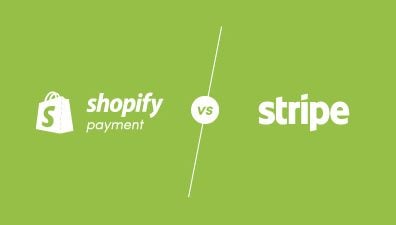In today’s fiercely competitive online marketplace, headless commerce has emerged as a notable trend, gaining substantial traction amongst both burgeoning businesses and established enterprises. Shopify, a prevailing platform in the eCommerce domain, facilitates merchants to tap into this trend, courtesy of Shopify Plus, offering a headless approach. In this piece, we will explore the concept of headless Shopify by examining some of the most successful headless Shopify examples.
Table of Contents
Headless Commerce Powered by Shopify
Striving to integrate advanced technologies, Shopify Plus has embraced headless architecture, a revolutionary approach that retains all the back-end functionalities Shopify is renowned for while offering unparalleled freedom to utilize diverse front-ends for the customer-facing aspects of the Shopify store.
This headless approach overcomes certain inherent limitations of default Shopify, such as rigid URL structures, and unfolds a myriad of opportunities for customization and personalization.
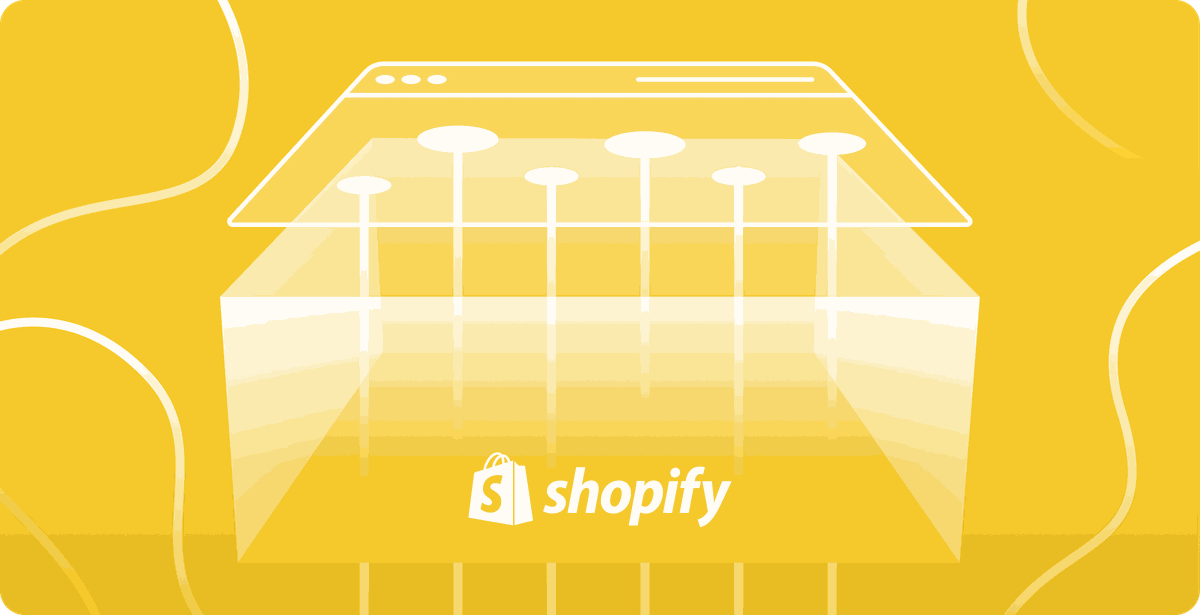
Headless commerce is poised to redefine the eCommerce landscape, allowing merchants to unleash innovative, user-centric shopping experiences. This transformative model maintains the robust, Shopify-optimized eCommerce components on the back-end while providing more control over front-end performance, ensuring seamless and adaptive user interaction.
Leveraging headless commerce through Shopify offers a plethora of benefits for businesses aspiring to refine their eCommerce presence.
- Enhanced Customization: With headless Shopify, businesses gain the liberty to design and modify the storefront without restrictions, allowing for the realization of unique brand visions and improved user engagement.
- Agile and Scalable Solutions: The decoupled architecture enables quick adaptations to market changes, efficient management of high traffic volumes, and seamless integration of new features, ensuring optimal performance and user satisfaction.
- Optimized User Experiences: The ability to create tailored, dynamic interfaces across multiple platforms results in enriched user experiences, fostering customer loyalty and driving conversion rates.
Best Headless Shopify Examples Store
Victoria Beckham Beauty
Victoria Beckham Beauty is one of the paradigms of luxury and elegance Shopify store examples, and its foray into headless commerce via Shopify ensures that its online presence is a direct reflection of the brand’s ethos.
Embracing a philosophy where beauty complements and empowers the dynamic life one leads, Victoria Beckham Beauty extends this credo to the realm of eCommerce, recognizing the need for brands to adapt and evolve in tandem with rapid technological transformations.

With Contentful CMS steering the creation and design of the front-end and Shopify’s storefront APIs managing the inventory and product information, the brand has achieved a symbiotic integration, reaping the benefits of accelerated, app-like performance and negligible page reload times.
This seamless and responsive interface has placed the brand at a vantage point, positively influencing the speed at the top of the sales funnel and subsequently boosting conversion rates. In essence, the adoption of a headless approach by Victoria Beckham Beauty has not only elevated user experience but has also augmented the brand’s digital footprint, reflecting its commitment to innovation and excellence.
Victoria Beckham Beauty’s move to headless commerce is not just a technological advancement; it’s a realization of the brand’s vision, mirroring the luxury, elegance, and dynamic empowerment that are the hallmarks of its product range.
By marrying aesthetic richness with advanced technology, the brand offers a superior, seamless, and dynamic online experience that aligns perfectly with the constantly evolving demands and expectations of the contemporary consumer.
Allbirds
Allbirds, revered globally for its commitment to eco-friendly sneakers and sustainable clothing, effortlessly merges style, functionality, and environmental consciousness. The brand’s dedication to a cleaner, more sustainable future is mirrored not only in its innovative products but also in its stylish and user-friendly website, powered by Shopify since its inception.
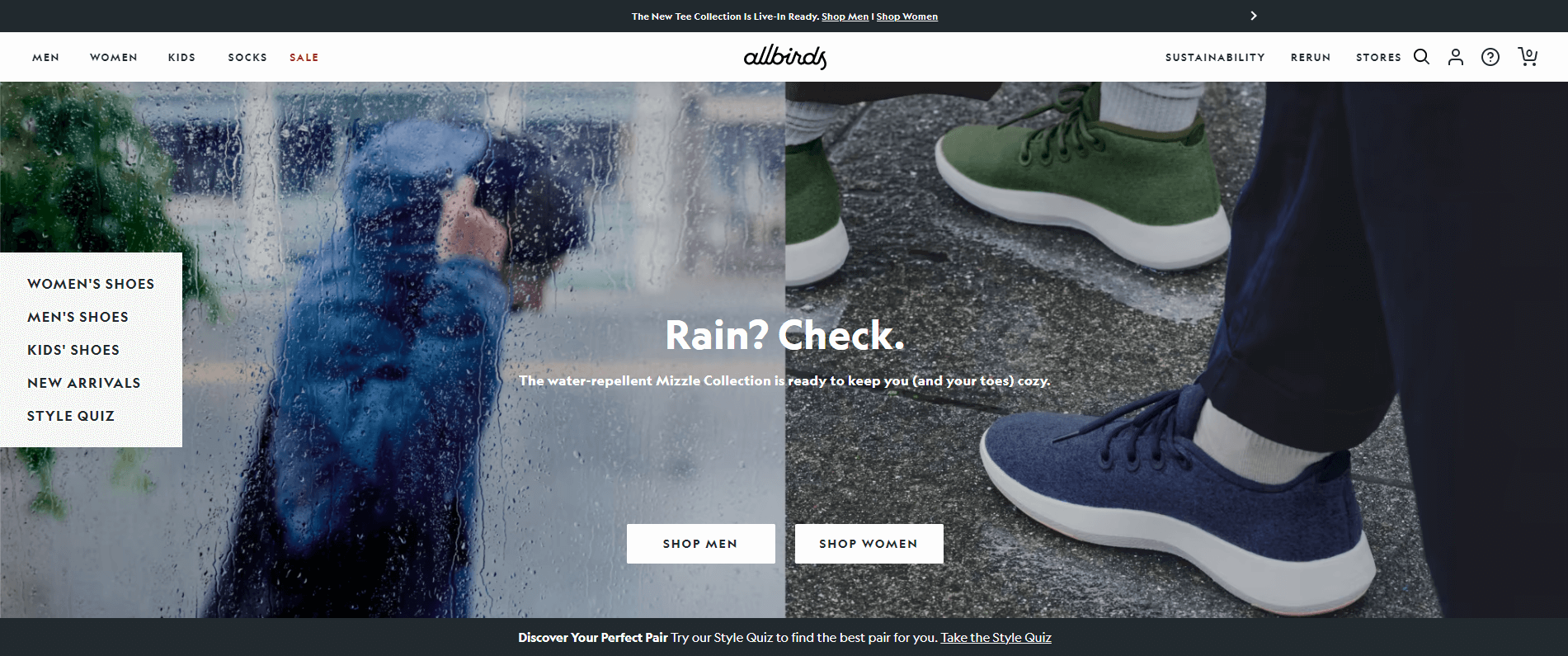
The seamless, clean design and distinctive personality of the Allbirds website are the fruits of a headless build, emphasizing speed, ease of use, and a rich, engaging user experience.
When faced with a surge in website traffic, Allbirds was confronted with the challenge of maintaining personalized user experiences without compromising the speed and responsiveness of the site.
To address this, the brand embraced headless architecture, allowing for a harmonious blend of flexibility and speed, ensuring that each visitor experiences the brand in its full essence without any inconvenience.
This strategic move to headless architecture enabled Allbirds to offer consistent, high-quality customer experiences, devoid of the intricacies and expenses associated with complex back-end systems, ensuring that each interaction on the platform is smooth, enjoyable, and reflective of the brand’s core values and aesthetic principles.
KOTN
KOTN, a distinguished sustainable lifestyle brand specializing in clothing and home decor, initially treaded cautiously around the idea of adopting headless architecture.
It was a concept that seemed to require a reassessment of established norms and strategies, but it wasn’t long before the realization dawned upon the founders about the immense potential for savings and scalability that a headless approach could unfold.
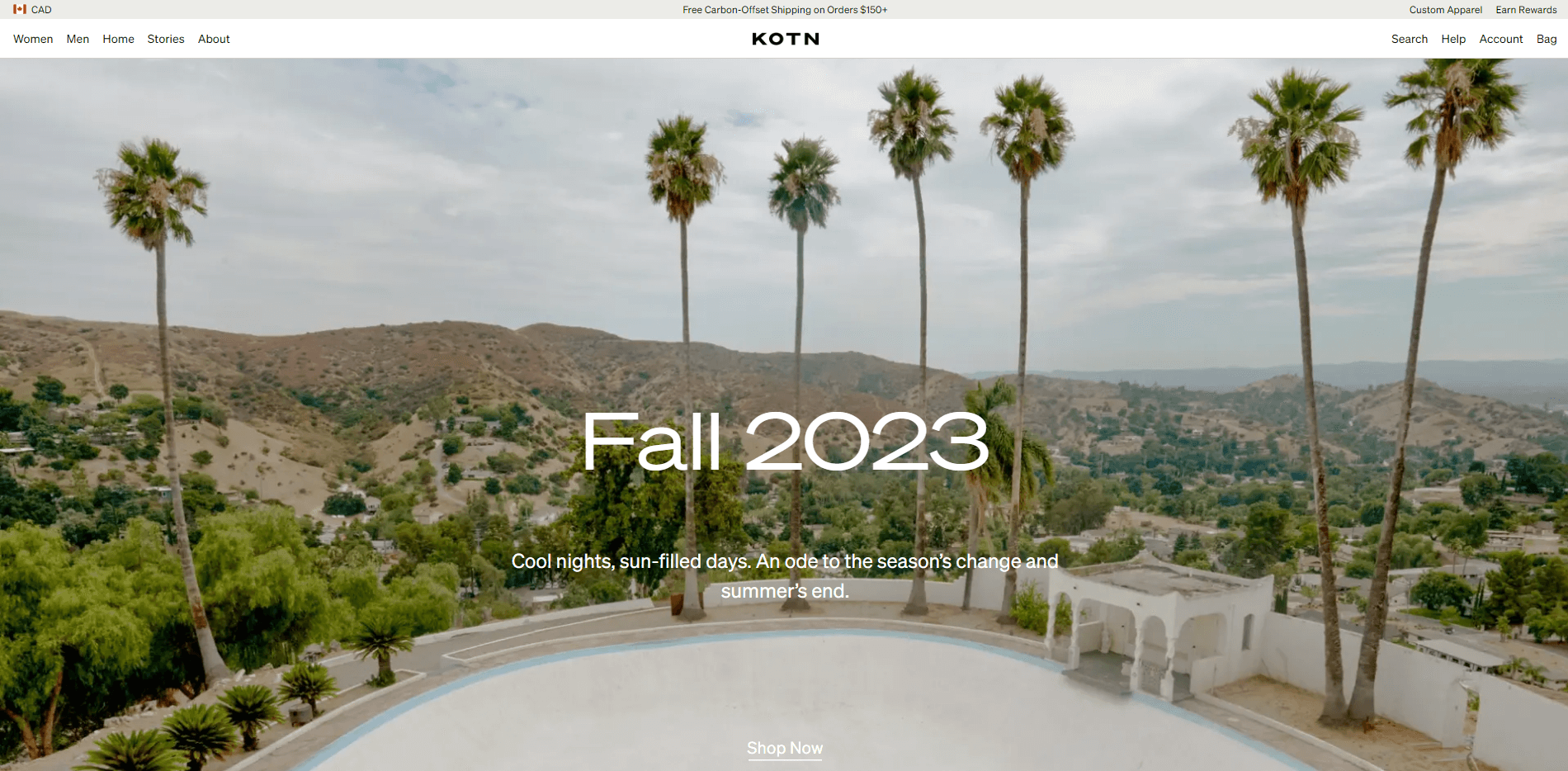
Reluctance transformed into innovation as they explored the limitless possibilities offered by headless architecture, gaining absolute control over their business operations and client experiences. This transformative approach endowed them with the capability to offer bespoke, out-of-the-box experiences to their clients, reshaping interactions and engagements on their platform.
A noteworthy advantage of this transition is the ability of its storefront to undergo updates within seconds, ensuring that the brand’s digital presence is always in sync with its latest offerings and innovations.
Remarkably, this instantaneous updating does not compromise the loading speed of the website, which remains swift even during periods of high traffic and heightened user activity, reflecting the seamless synergy of form and function within the headless architecture framework.
The user-centric features incorporated within KOTN’s headless Shopify store, such as the ability to hover over products to view different images and colorways and the quick add size options, have enriched the user experience, amalgamating aesthetic appeal with functional efficiency.
These intuitive features exemplify the brand’s commitment to delivering superior, seamless experiences that resonate with the user’s preferences and needs.
Bols
Bols, with its rich heritage dating back to 1575 and founded by Lucas Bols, stands as a testament to the Dutch mastery in distilling and distributing a diverse range of premium alcoholic beverages including vodkas, gins, and other spirits. When the decision was made to venture into the U.S. market with a direct-to-consumer strategy, Bols envisioned a flexible and efficient digital platform as a cornerstone of this expansion.
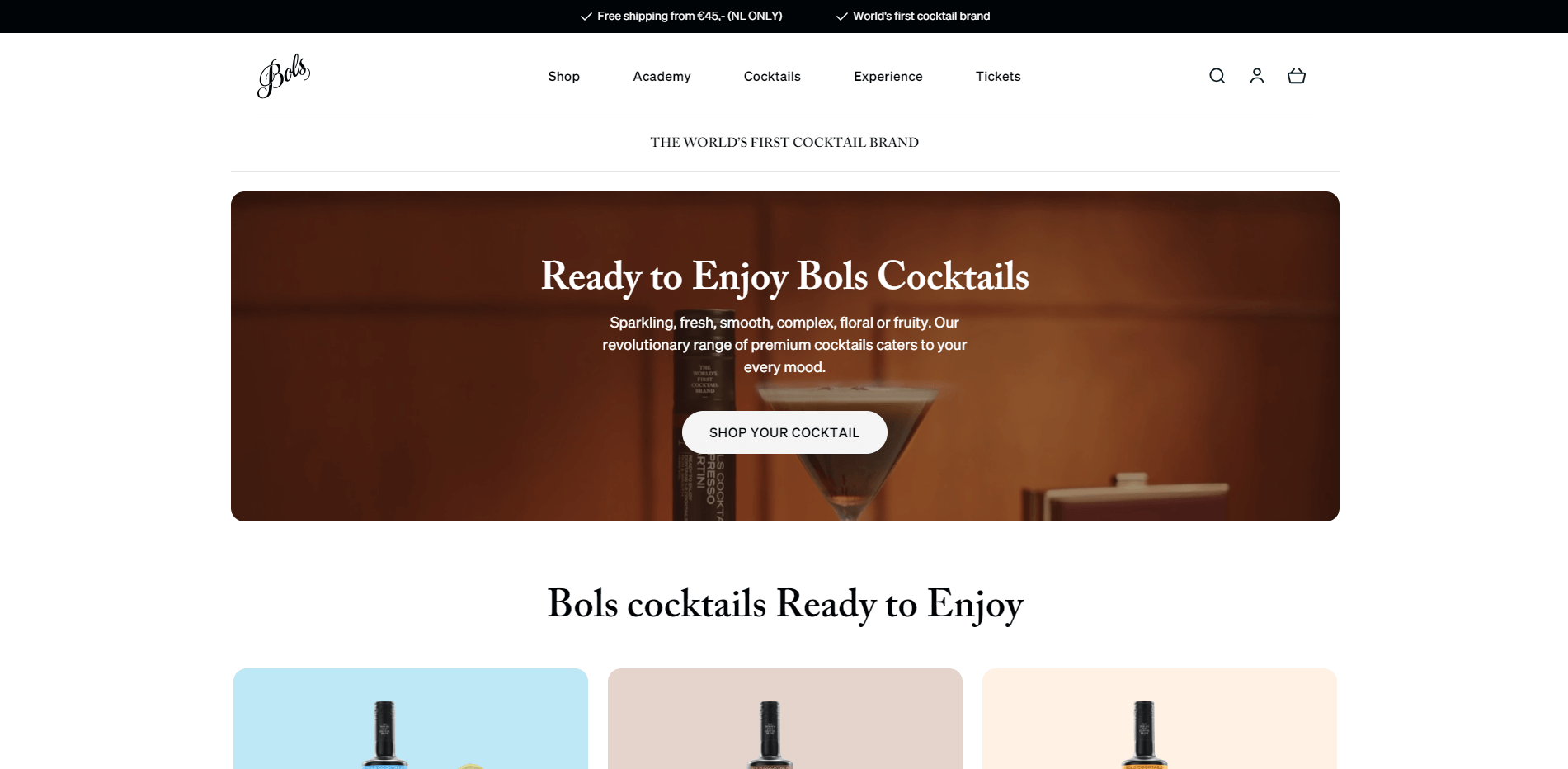
The aspiration to establish a digital presence that could facilitate the seamless creation, management, and execution of campaigns led Bols to embrace the headless approach with Shopify. By employing a headless Shopify Plus setup, Bols not only achieved a 50% increase in site speed but also unlocked unparalleled design and layout flexibility.
The revamp not only enhanced the aesthetic appeal and usability of the site but also brought in substantial organic traffic, securing high SEO rankings for a myriad of keywords.
The newly erected digital gateway to the world of Bols welcomes between 200,000 to 300,000 users a month, reflecting the brand’s successful amalgamation of tradition and technology to resonate with a wider audience.
The intuitive dashboards integrated within the setup have made the management of multiple storefronts and the launch of new products remarkably effortless, allowing Bols to navigate and adapt to the core changes with agility and precision.
Inkbox
Inkbox, a pioneering Canadian company renowned for its temporary tattoos, experienced a surge in demand, driving the need for a robust, scalable, and flexible solution to make their online store accessible to a broader audience. To navigate this expansive terrain, Inkbox embraced the versatility of Shopify and adopted a headless commerce platform to realize its vision of a seamlessly integrated and user-centric online presence.
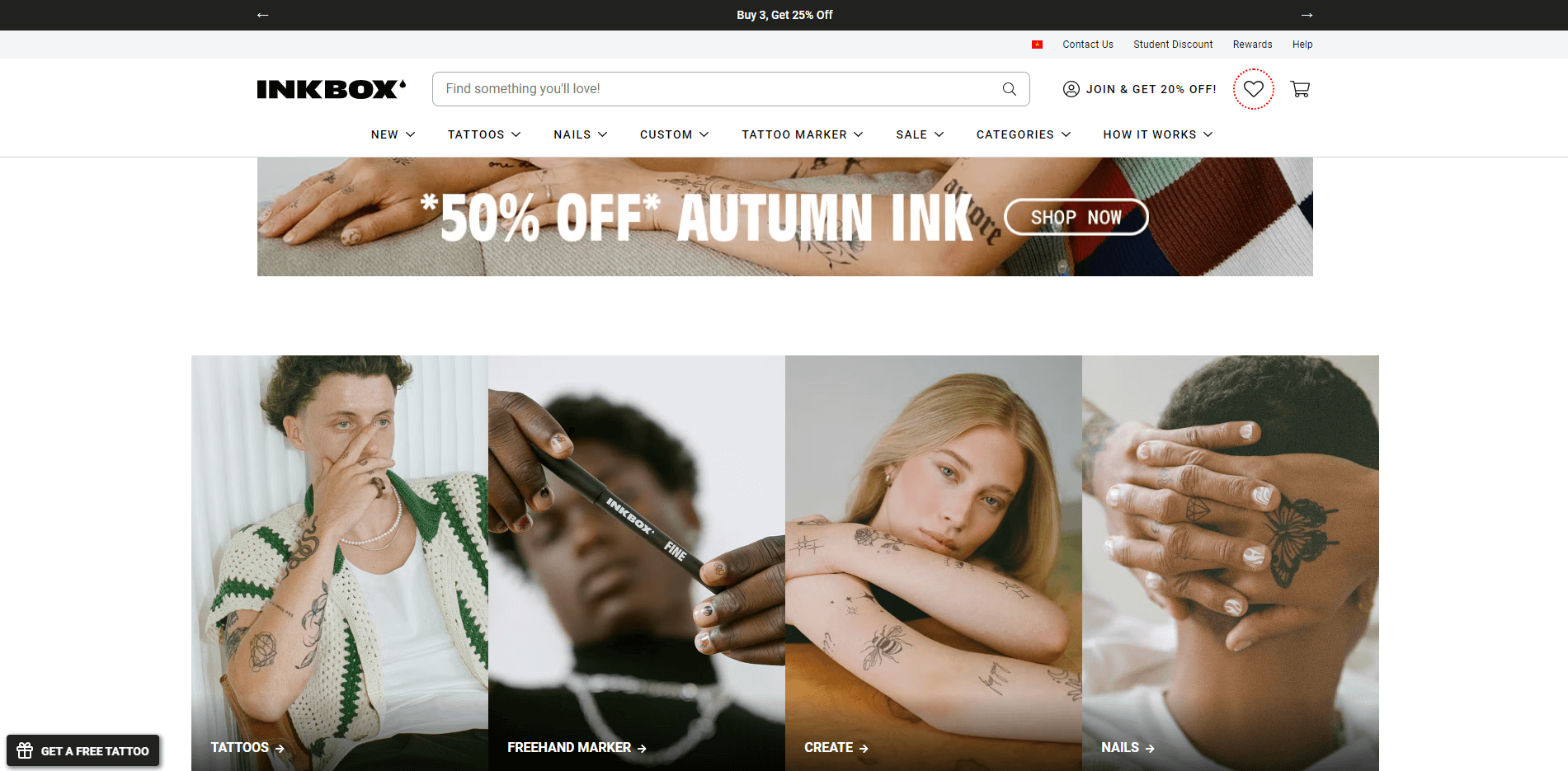
Inkbox’s website stands out as a paradigm of continuous innovation and customer-centricity, adorned with trending designs and the latest collaborations. It serves as an interactive canvas, allowing customers the freedom to upload their own tattoo designs, thereby elevating user engagement and personalization.
The Picked For You section, powered by advanced AI, meticulously curates tattoos to cater to the individual preferences of each visitor, fostering a uniquely tailored customer experience.
Beyond the customization and curated content, Inkbox’s website is a visual and interactive marvel featuring auto-playing videos, click-to-play videos, and a Shop the Look section integrated with Instagram, enabling users to explore and shop with unparalleled ease and inspiration.
It is evident that Inkbox has meticulously leveraged its headless build to craft an immersive and dynamic user experience, blending aesthetics with functionality.
Paul Valentine
Paul Valentine, a renowned premium jewelry and accessory company based in Germany, embarked on an ambitious journey to elevate their brand to international acclaim.
The realization of their global vision entailed expansion into diverse international markets, a venture fraught with complexities inherent in navigating multiple countries simultaneously.
To streamline this expansion and realize its vision, Paul Valentine harnessed the capabilities of Shopify Plus to launch five distinctive international stores spanning Europe and North America.
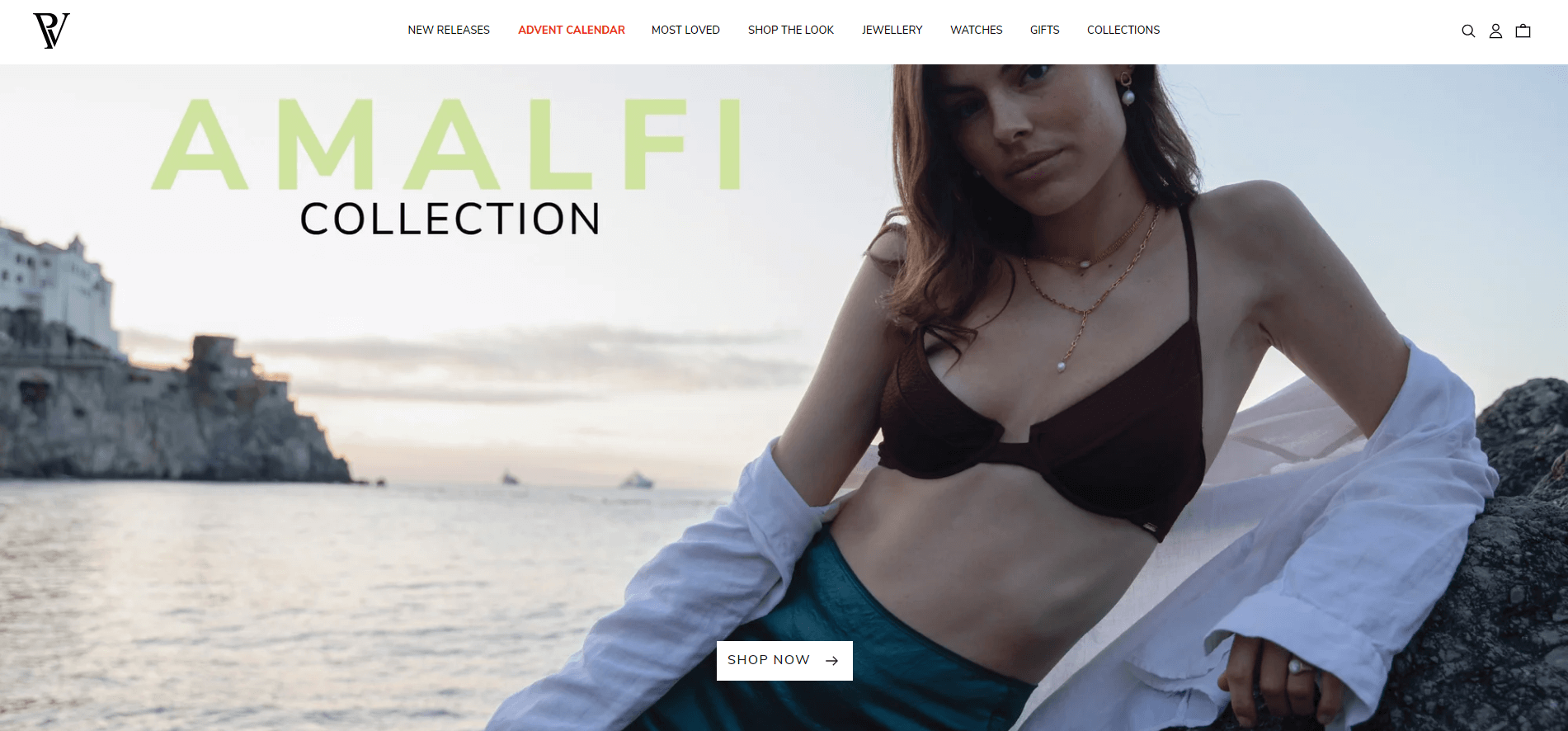
Each store is meticulously crafted to embody complete localization, ensuring that no two online experiences are alike, thereby providing a nuanced and individualized customer journey that resonates with the local consumer base.
The decision to adopt a headless approach has been pivotal, enabling Paul Valentine to seamlessly manage the infrastructure of various global stores and deliver a more tailored customer experience, reflecting the brand’s commitment to excellence and customer satisfaction.
The fruits of this strategic approach are evident. Paul Valentine has successfully marked its presence in 131 countries, facilitated through 20 international web businesses that communicate in 8 different languages, truly embodying the global spirit of the brand.
This extensive reach and diverse online presence have been orchestrated through the synergy of just two Shopify stores and the robust back-end functions of Contentful CMS, showcasing the immense potential and versatility of headless commerce.
Verishop
Verishop, a distinguished multi-brand retailer, stands out in the eCommerce landscape, offering a diverse range of products spanning fashion, beauty, health, and home goods.
With a commitment to delivering unparalleled shopping experiences, Verishop has optimized its online presence to provide tailored experiences at brand-specific URLs, significantly enhancing SEO performance and customer engagement.

The dynamic mix of Shopify Plus and Contentful CMS empowers Verishop with headless architecture, enabling the seamless loading of diverse products on distinct pages without compromising the page’s speed or responsiveness.
This intricate synergy has transformed the shopping experience, resulting in a highly responsive and user-friendly website that not only meets but exceeds customer expectations, driving higher levels of customer satisfaction and engagement.
Recess
Recess, the innovative wellness brand, has intricately blended modernity and wellness, offering a distinctive range of hemp-infused sparkling water.
Embracing the essence of innovation and expansion, Recess has leveraged the robust capabilities of Shopify Plus to attain the requisite flexibility and scalability, ensuring its readiness to meet diverse and evolving consumer needs.
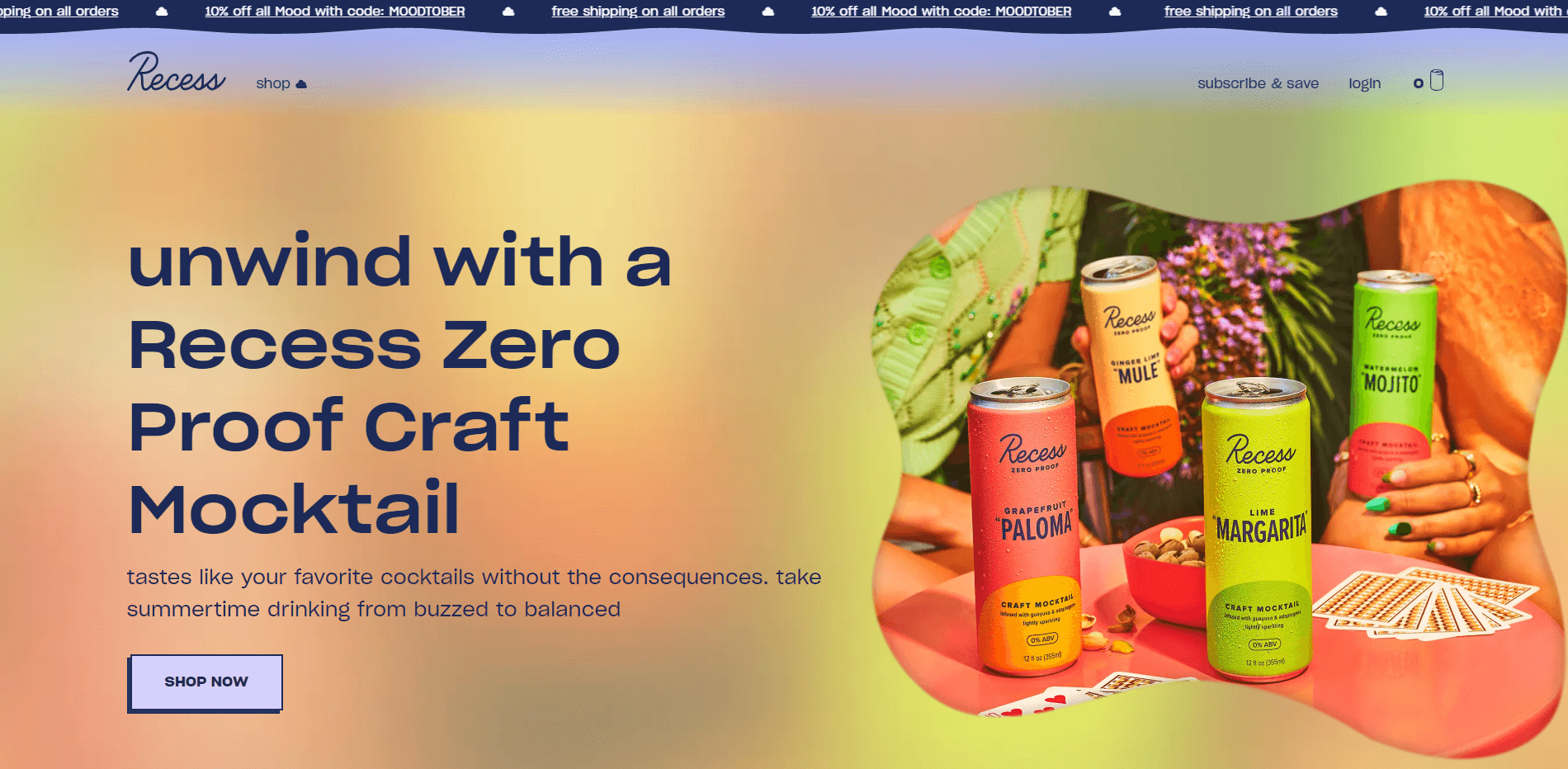
Operating on a subscription-based model, Recess enables customers to effortlessly order and receive their preferred beverages regularly, establishing a consistent and reliable connection with the brand.
The implementation of headless Shopify empowers Recess to disseminate content effectively across the web while simultaneously customizing its storefronts with unparalleled precision and coherence, ensuring a seamless and integrated brand presentation.
This avant-garde approach allows Recess to introduce bespoke functionalities to its online presence, including immersive and relaxing animations that synchronize with visitor interactions, enhancing the user experience as they navigate through the page.
This meticulous integration results in an immersive and aesthetically pleasing brand experience, reflecting the brand’s commitment to quality, innovation, and customer satisfaction.
Daring Foods
Daring Foods, stationed in Los Angeles, California, is a revolutionary plant-based protein brand fervently committed to offering nutritious alternatives to chicken that are environmentally sustainable. With an aspiration to incorporate a custom UI front-end while maintaining the integrity of their website’s shopping experience, they recognized the necessity for an innovative approach.
Implanting dynamic front-end features in a traditional site structure could potentially disrupt core functions and deteriorate website performance, thereby impacting search engine visibility and conversions.
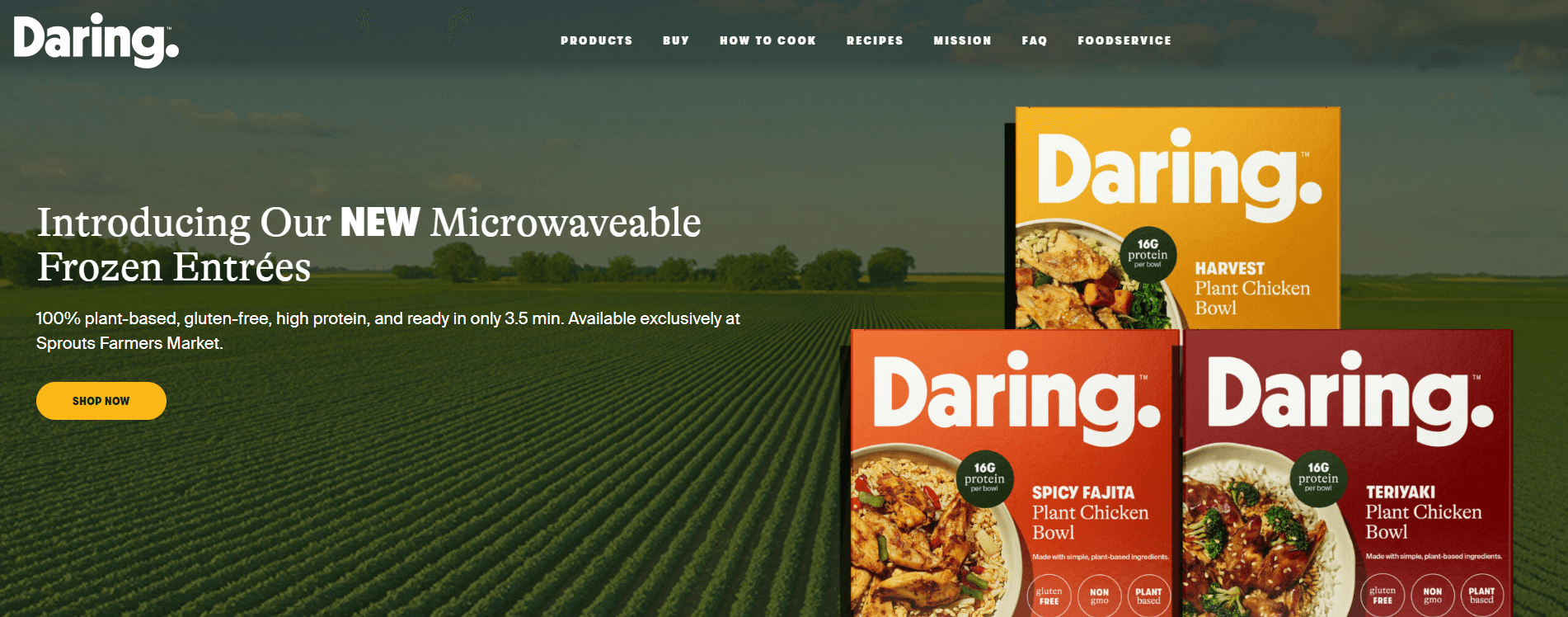
To counteract these potential pitfalls, Daring Foods strategically opted to transition its Shopify store to a headless architecture. This approach bestowed them with the liberty to instigate alterations to the front-end without influencing the foundational back-end operations of their eCommerce presence.
As a result of adopting a headless approach, Daring Foods has proficiently executed content and design renovations on its website without overwhelming its foundational back-end operations.
This strategic transition has not only optimized the website’s overall performance but has also catalyzed a remarkable near 40% surge in product view sessions, illustrating the transformative power of headless commerce in optimizing user engagement and operational efficiency.
Rothy’s
Rothy’s, a brand that prides itself on its innovative approach, chose to embrace a non-traditional pathway by adopting a headless architecture, a step away from the then-standard monolithic structure.
This unique architectural approach has significantly streamlined the process for Rothy’s to launch additional stores dedicated to various international regions.
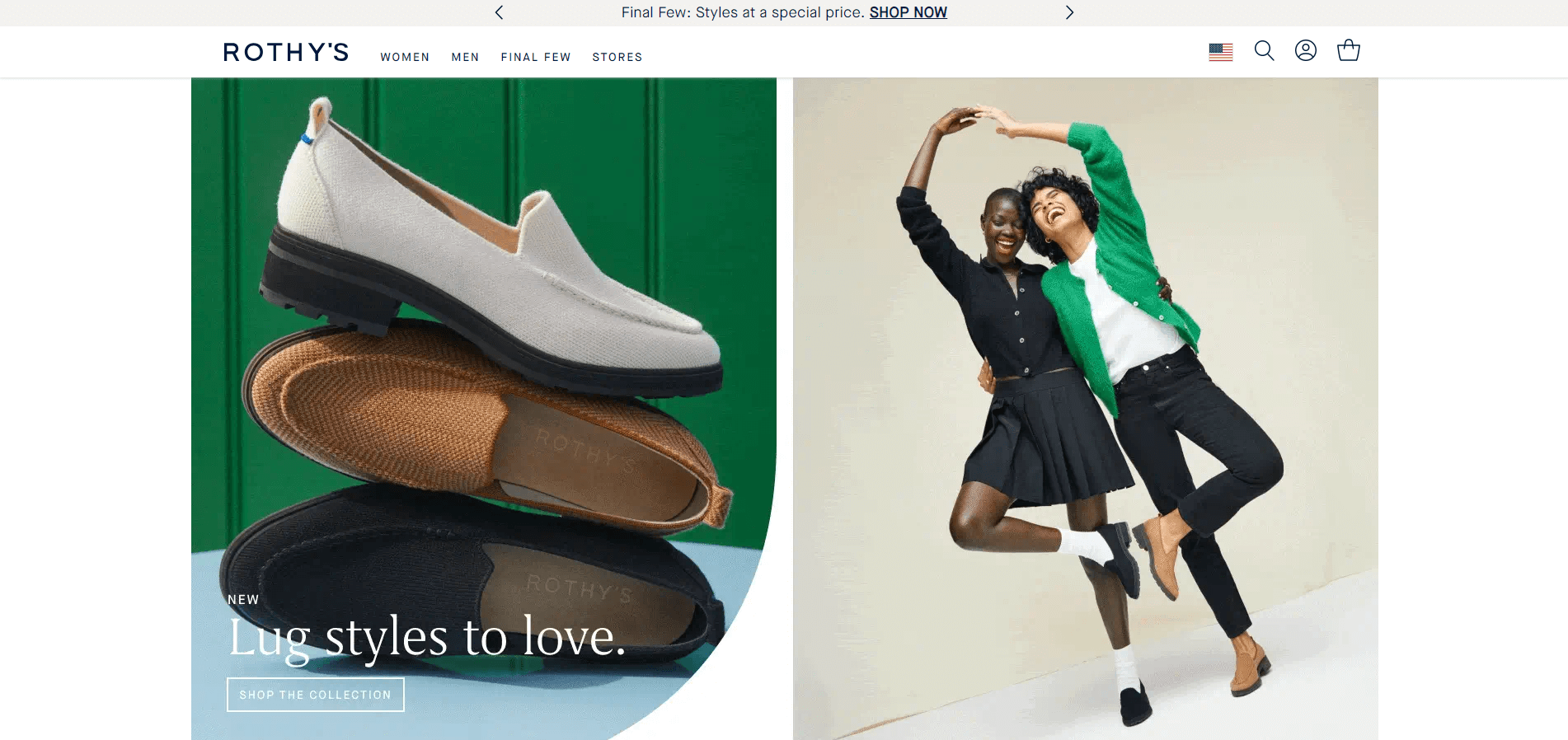
The headless structure grants Rothy’s the flexibility to repurpose back-end data, including the product catalog and content, while concurrently customizing different front-ends tailored to each specific region. This enables them to accommodate regional preferences, exhibit varied pricing structures, and incorporate multiple languages seamlessly.
For brands like Rothy’s aiming to globalize their stores, adopting a headless approach or exploring other solutions to effectively sell internationally on platforms like Shopify can be revolutionary, providing insights into versatile and scalable business strategies.
The model adopted by Rothy’s exemplifies how integrating advanced solutions can facilitate seamless international expansion and localization, thus maximizing reach and customer engagement.
The Pros and Cons of Headless Shopify Stores
Shopify stands as a comprehensive solution for all eCommerce requisites, incorporating mobile checkout that supports varied payment methods, inherent PCI Compliance Level 1 security, and intricate order management and inventory systems.
Nonetheless, there exists an option to utilize its back-end eCommerce functionalities while foregoing its front-end capabilities, like the theme editor and themes.
Opting for a headless storefront becomes imperative when seeking heightened control over product display, quicker load times, and more adaptable content management and content creation workflows.
Let’s delve into the respective advantages and disadvantages of such an approach.
Headless Shopify Store Advantages
The Storefront API of Shopify, formulated in GraphQL, serves as the communication conduit between the front-end and the back-end. It facilitates compatibility with Shopify for third-party providers, unfolding limitless possibilities for customizing the appearance, ambiance, and operations of your store, all while retaining the fundamental components of your Shopify setup.
Enhanced Customization
Headless Shopify allows for unparalleled customization, enabling businesses to create unique, user-centric experiences that are tailored to their brand and customers’ needs. Developers have the flexibility to build a bespoke front-end, altering the appearance and functionality to better align with brand aesthetics and objectives.
Improved Performance
By enabling businesses to utilize a front-end system optimized for speed and performance, headless Shopify often results in faster website load times. This improved performance can significantly enhance user experience, contributing to increased customer satisfaction and higher conversion rates.
Multi-Channel Selling
Headless Shopify enables seamless integration with various touchpoints and platforms, allowing businesses to offer a consistent shopping experience across multiple channels such as mobile apps, social media, marketplaces, and more. This approach makes it easier to adapt to the dynamic and diverse selling environments of the modern eCommerce landscape.
Optimized User Experience
Utilizing advanced technologies for the front-end allows businesses to implement innovative features, interactive elements, and personalized content, delivering a more engaging and responsive user experience. Enhanced user interfaces and user experiences can lead to increased customer retention and loyalty.
Better SEO and Marketing
A headless approach can lead to better SEO outcomes due to improved site speed, mobile responsiveness, and user experience. The ability to tailor front-end elements also provides more opportunities for implementing effective SEO strategies and targeted marketing campaigns.
Scalability
The decoupled nature of headless Shopify enables businesses to scale their operations more efficiently. They can modify the front-end to meet growing demands, explore new markets, or adapt to changing customer behaviors without the need for extensive back-end alterations.
Enhanced Security
Since the front-end is separated from the back-end, potential security threats to the user interface layer have minimal impact on the data and logic layer. This layered architecture can help in minimizing the risk of data breaches and maintaining the integrity of the system.
Managing content across diverse storefronts
The detachment of content management from theme management is significantly advantageous for brands. It empowers them to refine their workflow and disseminate consistent content over various storefronts efficiently. This feature is particularly beneficial for businesses operating multiple storefronts, aiming to showcase distinct content on each site.
Headless Shopify Store Disadvantages
When delving into the world of Headless Shopify, businesses encounter a mix of benefits and drawbacks. Here are some of the potential disadvantages:
Significant Upfront Cost
Installing Shopify Themes is a straightforward process, typically manageable without professional assistance. A few apps and plugins later, and your store is usually ready to go.
However, opting for a headless store involves contracting an agency and can incur expenses upwards of $70,000. Even if budget constraints lead to seeking more economical alternatives, finding a quality solution below $5,000 is a rarity.
Maintenance Efforts
With headless commerce, maintaining synchronicity between the front-end and back-end can be challenging and necessitate continuous efforts and monitoring, potentially leading to higher long-term maintenance costs and resources.
Learning Curve
There can be a steep learning curve for both developers and non-technical staff when adapting to a headless system. This new approach to managing and operating eCommerce stores can demand training and acclimatization to new tools and workflows.
Possible Integration Issues
While headless commerce allows for integrating various systems, if not implemented correctly, integration issues can arise, affecting the functionality and performance of the online store.
In Conclusion,
Over the years, Shopify has established itself as a robust and reliable platform for crafting optimal eCommerce experiences. Beyond its standard offerings, Shopify also presents the opportunity to adopt a headless approach, enabling the utilization of diverse designs as foundational elements for more extensive applications.
Embracing the Headless Shopify store can be a game-changer for your eCommerce endeavors. It not only bestows a technological advantage but also facilitates a robust workflow, empowering quick and efficient micro-decisions. The agile framework allows marketing and product design teams to adeptly navigate omnichannel strategies, fueling business growth.
Leverage our Shopify development services to tailor your Shopify store to your unique requirements, or embrace the advanced capabilities of the headless Shopify store. Furthermore, don’t forget to get in touch with us if you have any problems or obstacles in developing your own online presence.



